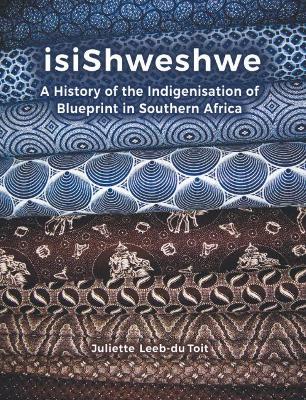The cross-cultural usage of a particular cloth type - blueprint - is central to South African cultural history. Known locally as seshoeshoe or isishweshwe, among many other localised names, South African blueprint originated in the Far East and East Asia. Adapted and absorbed by the West, blueprint in Africa was originally associated with trade, coercion, colonisation, Westernisation, religious conversion and even slavery, but residing within its hues and patterns was a resonance that endured. The cloth came to reflect histories of hardship, courage and survival, but it also conveyed the taste and aesthetic predilections of its users, preferences often shared across racial and cultural divides. In its indigenisation, isishweshwe has subverted its former history and alien origins and has come to reflect the authority of its users and their culture, conveying resilience, innovation and adaptation and above all a distinctive South Africanness.
In this beautifully illustrated book Juliette Leeb-du Toit traces the origins of the cloth, its early usage and cultural adaptations, and its emerging regional, cultural and aesthetic significance. In examining its usage and current national significance, she highlights some of the salient features associated with histories of indigenisation.
- ISBN13 9781869143145
- Publish Date 1 May 2017
- Publish Status Active
- Publish Country ZA
- Imprint University of KwaZulu-Natal Press
- Format Paperback
- Pages 448
- Language English
